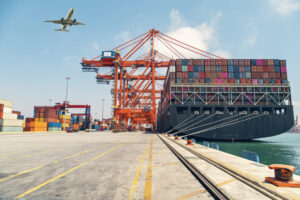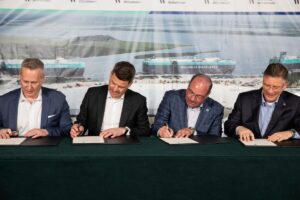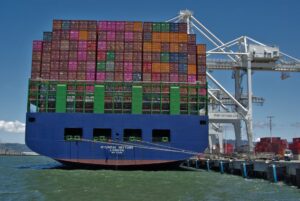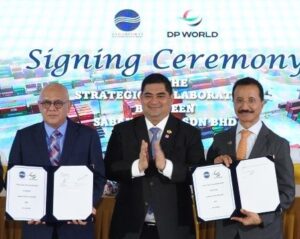APM Terminals will deploy innovative sustainability solutions at its Mumbai terminal with the view to global implementation following a partnership with Siemens.
GTI Mumbai is one of India’s busiest container terminals, handling more than two million TEU in 2018 and 2019.
Why GTI?
Mikael Gutman, Head of Procurement for APM Terminals, told PTI that GTI holds the fifth-highest fuel consumption for operations, and second-highest electricity consumption in its portfolio.
Being one of the busiest terminals in India, in 2020 the gateway consumed 5.8 million litres of diesel and 25 Giga Watt hours of electricity, totalling 66,847 tonnes of fuel-based CO2 and 84,429 tonnes of CO2 from generation of purchased electricity.
“Part of the selection criteria is where we have the right playground to test these solutions. We noticed the appetite in the leadership team in Mumbai, so we felt that was a good place to start. We will try to address terminals where we have highest consumption first,” Gutman said.
“In doing all of these investments, there’s a positive business case not only from an environmental view which is a main driver, but also from a business sense.
“We see energy demand [and] we have so much to do, so I think our value proposition for customers by controlling our consumption better [means] we also control our service delivery to customers.”
How the partnership plays out
The partnership will utilise Siemens technology and know-how to trial four solutions at the facility.
Two of the solutions will address consumption challenges through energy optimisation by use of transformers through rerouting electricity more efficiently through the terminals, Gutman said.
The Procurement Head continued that a third strand of the partnership will centre on equipment in the use of cell batteries for hybrid cargo-handling equipment in a bid to reduce consumption.
The fourth and final pillar of rollout will centre on assessing options of solar power generation on the physical infrastructure of the terminal.
When fully operational, Gutman said APMT and Siemens predict reductions of up to 40% in Scope One (fuel consumption emissions) and 16-20% in Scope Two (electricity emissions) through the project, which will be continually reviewed.
Stakeholder engagement
The project is solely focused on terminal consumption for now; however, Gutman said APMT aims to scale solutions to bring in logistics agents including shippers and chassis sectors – Scope Three – to collectively become more sustainable.
“We have an appetite for a lot, but we can’t bite off more than we can chew. We are part of the shipping liners’ and port community’s supply chain, so by doing our part, we are also doing their part,” he said.
“It’s on our agenda to move on with our partners of the supply chain, but it’s early days for us – we’re very ambitious, and we do actually want to move the needle here. But part of our strategy was to prove the approach and the concept in Mumbai first.”









